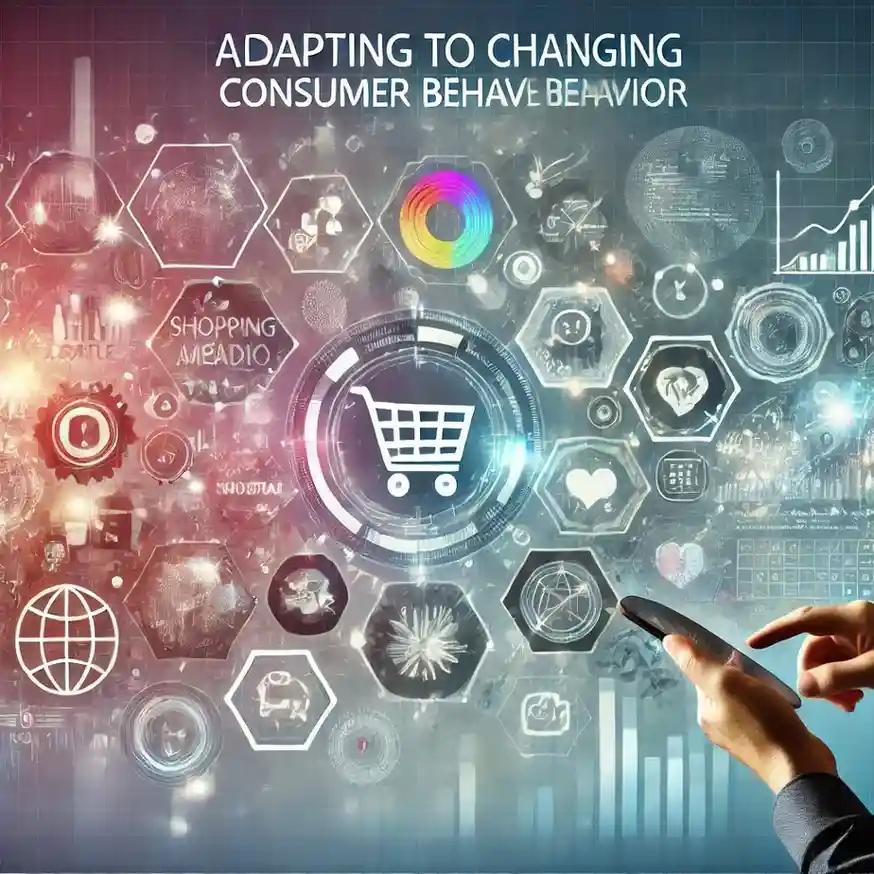
Adapting to Changing Consumer Behavior in the Digital Age

In today’s rapidly evolving market, consumer behavior is undergoing significant transformations, driven by the proliferation of digital technologies and changing societal norms. Businesses must adapt to these shifts to remain relevant and competitive. This article explores how consumer trends are evolving in the digital age and provides actionable strategies to align with these changes.
Understanding Consumer Behavior in the Digital Age
Consumer behavior refers to how individuals select, purchase, use, and dispose of products or services. The digital revolution has reshaped these behaviors, giving rise to new patterns and expectations.
Key Drivers of Change
- Technological Advancements: Widespread internet access, mobile devices, and AI-driven tools have revolutionized how consumers interact with brands.
- Social Media Influence: Platforms like Instagram, TikTok, and Twitter drive purchasing decisions through trends and influencer marketing.
- Increased Access to Information: Consumers now research extensively online before making purchases, demanding transparency and authenticity from brands.
- Focus on Personalization: Modern consumers expect tailored experiences, from product recommendations to personalized communication.
Emerging Trends in Consumer Behavior
1. Preference for Online Shopping
E-commerce continues to dominate, with consumers valuing convenience, variety, and competitive pricing. Mobile commerce is also on the rise, emphasizing the need for seamless mobile experiences.
2. Sustainability and Ethical Consumption
Consumers are increasingly prioritizing brands that demonstrate environmental responsibility and ethical practices. Products with eco-friendly packaging or a commitment to social causes are becoming preferred choices.
3. Experience Over Ownership
Younger generations prioritize experiences, such as travel and entertainment, over owning physical goods. This trend has led to the rise of subscription services and shared economy platforms.
4. Demand for Instant Gratification
Fast delivery, quick customer service, and instant access to products or services have become the norm. Businesses like Amazon and Uber have set high standards for speed and convenience.
5. Influence of User-Generated Content
Reviews, testimonials, and social media posts from other consumers significantly impact purchasing decisions. Authenticity in content resonates more than traditional advertisements.
Adapting to Changing Consumer Behavior
Businesses can thrive by embracing these changes and implementing strategies that align with modern consumer expectations.
1. Embrace Digital Transformation
Invest in digital tools and platforms to improve customer engagement, streamline operations, and provide better experiences.
- Create user-friendly websites and apps.
- Leverage AI for chatbots and personalized recommendations.
2. Focus on Customer-Centric Strategies
Shift your approach to prioritize customer needs and preferences.
- Collect and analyze customer insights to understand expectations.
- Use feedback to enhance products, services, and experiences.
3. Adopt Sustainable Practices
Align your brand with sustainability to appeal to eco-conscious consumers.
- Reduce carbon footprints in operations.
- Offer recyclable or biodegradable packaging.
4. Utilize Data Analytics
Analyze consumer data to identify trends, optimize marketing strategies, and predict future behavior.
- Use predictive analytics to anticipate customer needs.
- Leverage CRM tools to track and manage customer relationships.
5. Enhance Social Media Engagement
Capitalize on social platforms to interact directly with consumers and build brand loyalty.
- Partner with influencers for authentic promotion.
- Encourage user-generated content through contests or campaigns.
6. Provide Omnichannel Experiences
Ensure consistent and seamless experiences across all touchpoints—online and offline.
- Integrate in-store and digital experiences.
- Use tools like QR codes to bridge the gap between physical and online interactions.
Real-World Examples
Nike
Nike has embraced personalization through its apps, offering tailored workout plans and product recommendations based on user data. The brand’s focus on sustainability, with initiatives like “Move to Zero,” resonates with eco-conscious consumers.
Starbucks
Starbucks effectively combines digital and physical experiences through its app, which enables mobile ordering, payment, and rewards tracking, creating a seamless customer journey.
Warby Parker
This eyewear brand leverages omnichannel strategies by combining online shopping with physical stores, allowing customers to try products virtually and in-person.
Benefits of Adapting to Consumer Behavior
- Increased Customer Loyalty: Meeting modern consumer expectations fosters stronger relationships and repeat business.
- Enhanced Competitive Edge: Staying ahead of trends positions businesses as industry leaders.
- Higher Revenue Growth: Improved customer experiences and targeted marketing drive sales.
- Better Brand Reputation: Aligning with values like sustainability and personalization boosts brand image.
Conclusion
Adapting to changing consumer behavior in the digital age is no longer optional—it’s essential for survival and growth. By embracing digital transformation, focusing on customer needs, and staying attuned to emerging trends, businesses can build strong connections with their audiences and thrive in an ever-evolving marketplace.
As the digital age continues to redefine consumer expectations, organizations that prioritize innovation, authenticity, and customer-centricity will stand out and achieve long-term success.
Read More About Custom Foot Pegs and Controls for Better Comfort





1 thought on “Adapting to Changing Consumer Behavior in the Digital Age”